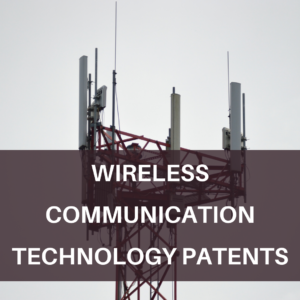
LG Electronics has secured patent in India for a method for reporting status reports in wireless communication systems. The patent discloses a user equipment (UE) providing wireless communication services and a method of preventing transmission error of data while maintaining its security. The invention also discloses a method of controlling an access of a Relay Node (RN) to a Donor eNB (DeNB) and an access of the UE to the RN during a process of transmitting and receiving user data when the RN as a radio network node is connected to the DeNB in an Evolved Universal Mobile Telecommunications System (E-UMTS), a Long Term Evolution (LTE) system, and a LTE-Advanced (LTE-A) system that have evolved from a Universal Mobile Telecommunications System (UMTS).
Long Term Evolution LTE System
The present patent application discloses the basics of LTE system as background art, wherein LTE is termed as a mobile communication system that has evolved from a UMTS system. Generally, this standard is established by 3rd Generation Partnership Project, or 3GPP, which is an international standardization organization.
A thorough analysis of the patents granted in India reveals that software patents are routinely granted by the patent office. The patent office follows similar approach for patents covering mobile applications. The process of patenting a mobile app is tedious, costly, and time-consuming. To get a mobile app patented, the resources, efforts, time invested, and every other aspect of the application must be considered.
Three perquisites for the application which are generally the same for all the countries, include, one must mention all details regarding the application and documentation of the project from its code to the flow as well as the functioning of the application. It must prove the fact that it is practical and useful. In 2014, Alice Corp. v. CLS Bank International, the US Supreme Court started a two-step analysis. The first step is to ensure that to move the procedure to the next step, the patent claim must contain an abstract like a method of computation or any other general principle.
In the second step, the court finds out whether the patent claim added has “something extra” to the abstract idea than what already exists in the claim. The Court might consider this as an “inventive concept”. In addition, the application must be substantially new and unique, ensuring that their idea has not been patented before by anyone, else it might lead to infringement. For this proper research is necessary using various websites like USPTO or Google Patents. The most important criteria are that the mobile app should be non-obvious, i.e., it should possess a unique trait or functionality.
For patents covering software and mobile applications, inventors follow a thorough sequence of steps in consultation with their patent attorney. It is advisable to employ software patent attorneys as for a well-informed high-end patent that surely gets selected. An attorney will be able to handle the legal process that may include litigation.
The first step of patent process includes preparing an invention disclosure document. For a Patent, the court needs tangible proofs of the invention in case of a patent infringement lawsuit. The application must ensure to record the development process possibly by creating a prototype of the application to breakdown its flow. The flowchart of the application will also help the attorney to understand the functionality and processes of the app which is to be patented.
Secondly, it is further advisable to employ patent attorneys as they can conduct detailed worldwide searches for similar applications being filed to avoid any infringement from other companies.
Two types of patent applications can be used for the mobile app, which are the Provisional Applications and Non-Provisional Applications. If one requires the patent to be granted fast, then the non-provisional application is best suited. Provisional Applications are less expensive to file and it will never become a patent unless a non-provisional application is filed. The provisional application expires after 12 months. To keep the patent right alive within that time frame, a non-provisional application must be filed. Such applications can use the term “patent pending” at the time of filing.
Non- Provisional applications are more expensive to file as compared to the Provisional applications. It is published within 18 months after filing and may become a patent within 24-48 months. If no provisional application is filed then it likely to become a patent sooner as it is directly processed by the patent office. Non-provisional applications can also use the term “patent pending” at the time of filing.
The last step is to apply with the patent office. Some of the important documents which must be submitted along with the application are the Declaration, Specification, Entity Status Form, Information Disclosure Statement, Application Data Sheet (ADS), Claims, Drawings, Fee Sheet, Cover Sheet, etc.
The process involving patenting a mobile app can last up to 2 to 3 years, which is entirely based on circumstances like applications getting objections by way of patent office actions and submitting the office action responses. Patenting of mobile applications does not only depend on the idea but also the basis of tangible proofs being presented. Patenting a mobile application can further help in protecting the app from getting misused by getting copied without any consent for a time frame of 20 years from the date of filing or priority date of the patent.
**********
Advocate Rahul Dev is a Patent Attorney & International Business Lawyer practicing Technology, Intellectual Property & Corporate Laws. He is reachable at rd (at) patentbusinesslawyer (dot) com & @rdpatentlawyer on Twitter.
Quoted in and contributed to 50+ national & international publications (Bloomberg, FirstPost, SwissInfo, Outlook Money, Yahoo News, Times of India, Economic Times, Business Standard, Quartz, Global Legal Post, International Bar Association, LawAsia, BioSpectrum Asia, Digital News Asia, e27, Leaders Speak, Entrepreneur India, VCCircle, AutoTech).
Regularly invited to speak at international & national platforms (conferences, TV channels, seminars, corporate trainings, government workshops) on technology, patents, business strategy, legal developments, leadership & management.